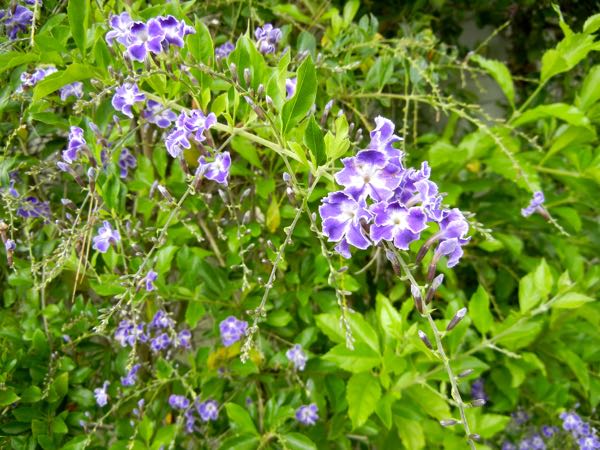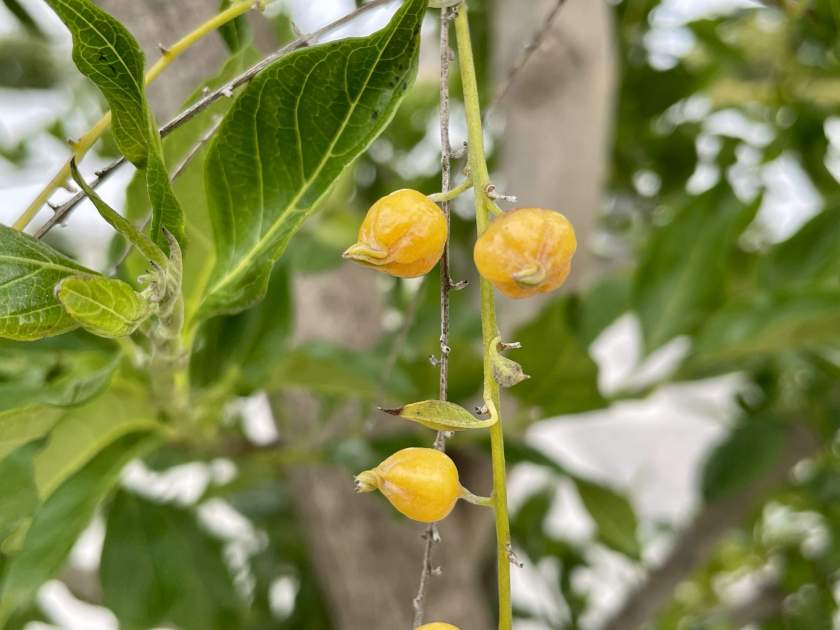Duranta repens is known as Duranta erecta and is native to Central and South America, more particularly Argentina, Brazil, and Mexico, it has dripping violet colors in multi-clustered flowers. Other common names include Golden Dewdrop, Pigeon Berry, and Skyflower.
It is part of the Verbenaceae family of plants. Duranta erecta was named after Castore Durante da Gualdo (1529-1590), an Italian botanist. It is known as Duranta erecta and D. repens is an older name, especially referring to varieties that had smaller leaves.
It is a versatile and fast-growing shrub that attracts butterflies and flowers all summer long. This plant is popular for its vibrant, cascading clusters of small flowers and its attractive golden berries. Duranta erecta grows to 6m or 20ft. Mature plants have thorns. The leaves are lighter green. They are elliptic, ovate, and opposite. Duranta erecta is a fast grower and can grow 50cm or 20in a year.
Duranta erecta flowers are lavender. They grow in terminal clusters on auxiliary stems. It can flower all year depending on the climate. Berries follow the flowers. It produces yellow-orange berries, each containing several seeds. The unripened berries as well as the leaves are toxic. However, songbirds do feed on the berries.


How to grow Duranta erecta:
- Sunlight: Duranta erecta thrives in full sun to partial shade conditions. It requires at least six hours of direct sunlight daily to ensure healthy growth and abundant flowering.
- Soil: Plant Duranta erecta in well-draining soil that is rich in organic matter. Loamy soil with a slightly acidic to neutral pH is ideal for its optimal growth.
- Watering: While Duranta erecta prefers consistently moist soil, it is important to avoid overwatering, as excessive moisture can lead to root rot. Water the plant deeply and thoroughly, allowing the top inch of soil to dry out between watering sessions.
- Pruning: Regular pruning is essential to maintain the shape and promote fresh growth. You can prune Duranta erecta in late winter or early spring before new growth emerges. Thin out crowded branches and remove any dead or damaged wood. Pruning also encourages a more compact and bushy form.
Disease and Pest Control:
- Pests: Duranta erecta is generally resistant to pests. However, it can occasionally attract common garden pests such as aphids, caterpillars, and whiteflies. Regular monitoring and the application of insecticidal soaps or horticultural oils can help control these pests.
- Diseases: Duranta erecta is relatively resistant to diseases, but it may occasionally experience issues such as leaf spots or root rot, particularly in overly wet conditions. To prevent diseases, ensure proper soil drainage, avoid overwatering, and maintain good air circulation around the plant.
Propagation:
- Seeds: Duranta erecta can be propagated from seeds. Collect the ripe berries from the plant, extract the seeds, and sow them in a well-draining seed-starting mix. Keep the soil consistently moist and provide warmth and bright light for germination.
- Cuttings: Stem cuttings are another common method of propagating Duranta erecta. Take 4 to 6-inch long cuttings from the tip or lateral branches of the plant. Remove the lower leaves and dip the cut end in the rooting hormone. Plant the cuttings in a well-draining potting mix and keep them warm and moist until roots develop.
Invasive Concerns:
It’s worth noting that Duranta erecta is considered invasive in some regions, such as parts of Australia, South Africa, China, French Polynesia, and Hawaii. In these areas, it is important to check local regulations and restrictions on planting Duranta erecta to prevent its spread into natural ecosystems.
By following these care guidelines, you can enjoy the beautiful blooms and golden berries of Duranta erecta while keeping it healthy and well-maintained in your garden or landscape.
Also read Duranta erecta ‘Alba’





